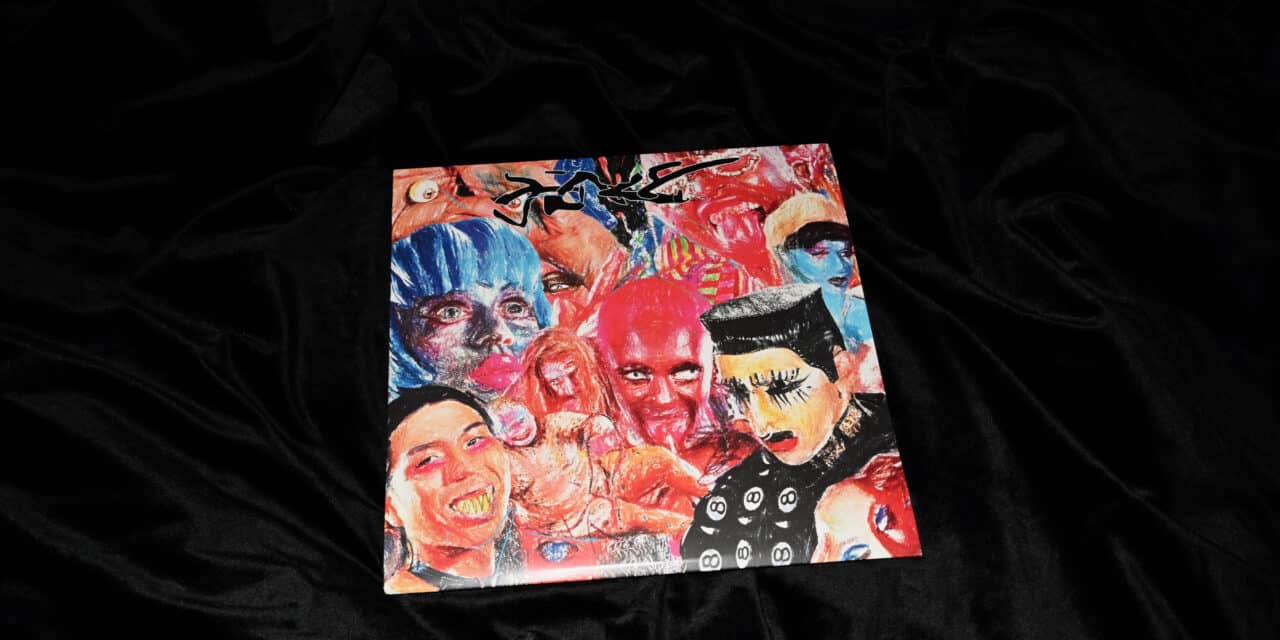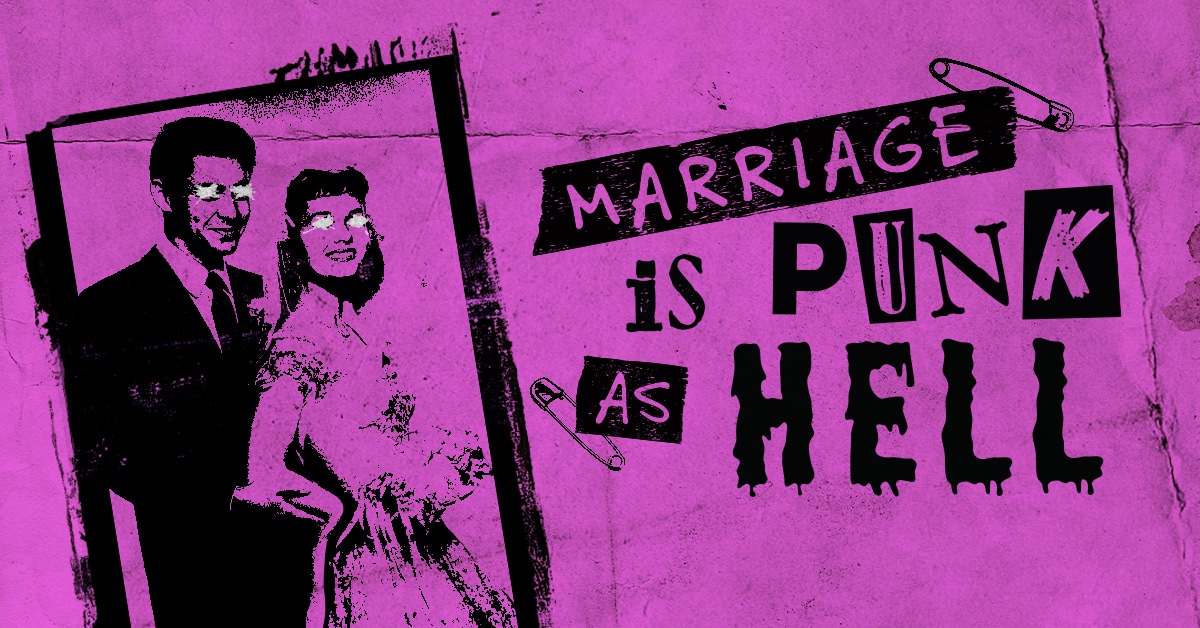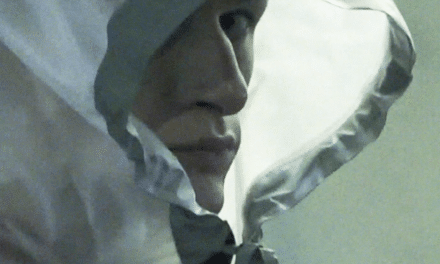Published and edited by Cristiano Grim
Photos by Parker Day
Design by Bráulio Amado
Somewhere between a gallery, a label, and a lucid dream, FAKE is quietly dismantling the old rules of independent publishing—and we can’t stop staring. The New York-based imprint, founded by experimental artist and multimedia provocateur Cristiano Grim, isn’t just a brand. It’s a cult object. A sensory ritual. A smirking détournement of everything you think you know about zines, records, and the spaces in between.
At its core, FAKE is a hybrid: each release is a gorgeously chaotic collision of audiophile-quality vinyl and offset-printed zine, curating works that speak the language of the underground with eerie fluency. Photography. Graphic design. Poetry. Electronics that oscillate between ecstatic and anxious. It’s a gesamtkunstwerk made for headphones and coffee tables, featuring contributors like Parker Day, Braulio Amado, Jane Pain, and Alessandro Adriani—names that don’t just float around scenes but shape them.
Grim, whose artistic tendrils stretch from the mic as frontman of INTRZN and Wrong Beach to the DJ booth under the moniker DJ REAL (see: LYL Radio Paris, The Lot NYC, Dublab LA), has a résumé that reads like a fever dream with a marketing degree. And it makes sense—his subversion is tactical. A Milan-educated economist turned cultural saboteur, he founded FAKE not as a reaction but as a reconstruction: a place where meaning is slippery, beauty is fractured, and form is always on the verge of mutation.
Each element is curated with almost brutal intentionality. Music mastered by Marco Antonio Spaventi. Vinyls pressed at Deepgrooves or Record Industry in Holland. Zines printed at Milan’s Fontegrafica, distributed by the sharpest tastemakers—Printed Matter in the US and Bordello a Parigi in the EU. It’s not about scale; it’s about signal.
In a cultural moment oversaturated with cheap dopamine and algorithmic spit-ups, FAKE offers a slower, stranger, sharper kind of stimulation. It doesn’t just invite you to look or listen—it dares you to feel. To question. To want more.
This isn’t nostalgia. This isn’t futurism. This is FAKE—and it might just be the most real thing we’ve seen in a while.
Check out Cristiano Grim, Fake Press, and the The Latest Issue Of Fake.

Cristiano Grim during a performance, photo by Samantha Sutcliffe
FAKE has a unique hybrid format—music on vinyl paired with a printed zine. What inspired this fusion of mediums, and how does it serve your vision of “disrupting meaning in art”?
Search and Destroy! Nobody is cooler than V. Vale, honestly. The work he’s done for independent publishing and for generations of artists, authors, and readers is absolutely iconic. He’s a cult leader! Search and Destroy used the exact same paper format and style of Interview Magazine. Andy Warhol baby! (Another influence, obviously.) The idea for the FAKE cover comes from Search and Destroy: a sick photo, elaborated by a graphic designer, and a logo. No headlines. No bullshit.
Another big inspiration, where I got the page format from, is Avant Garde magazine, published by Ralph Ginzburg and designed by legendary graphic designer Herb Lubalin. It was a revolution in the zine scene back in the 1970s, starting from the logo: Lubalin’s solution was tight-fitting letterform combinations that created a futuristic, instantly recognizable identity. It was so cool that the design community demanded a complete typesetting of the logo, and Lubalin ended up releasing ITC Avant Garde through his International Typeface Corporation in 1970. The format was pure experimentation: the page size was an almost-square 11.25 by 10.75 inches, bound in a cardboard cover (FAKE is 11.75 by 11.75). That physical quality combined with Lubalin’s layouts changed the zine design scene forever. The publisher also gave full control to the graphic designer, which is what I do. No rules. In my zine, the graphic designer weighs as much as I do. No hierarchy. No hyper-structures.
Avant Garde was publishing anything, from Picasso’s oft-neglected erotic engravings, which Lubalin willingly combined with his own aesthetic (printing them in a variety of colors, in reverse, or on disconcerting backgrounds), to drugs, sexual mores, politics, cultural turmoil, illustrated with photographs, serigraphs, and wild graphics.
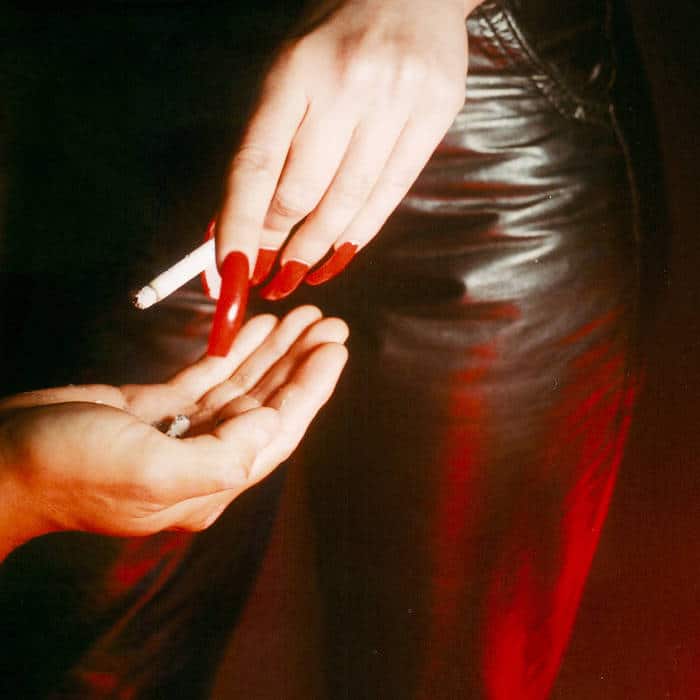
“Cristiano Grim’s album cover for Andi + Machino – Parafernales EP on Mannequin Records.”
With FAKE, the vinyl came later. I wanted to break the fourth wall and give people the chance to “listen to a zine.” That was the idea. At first, I thought about adding a cassette or a USB stick, but there wasn’t much harmony in the assembling. The vinyl was the missing piece. It fit perfectly. It kept the soul of the project while adding another layer, a stage where the performance could be completed. I worked with my friend and rad designer Jonathan Castro to process all these inputs, and together we came up with the final format and that sick logo.
Additional inspirations:
The work of Carmelo Bene.
The theater of cruelty by Artaud.
The Panic Movement by Arrabal and Jodorowsky.
The photography and publishing of Ren Hang.
Every book by Gertrude Stein.
Squatting.
Anarchist movements.
Punk subcultures.
To your question of how it serves my vision of “disrupting meaning in art,” well, we are locked into a narrative that we inherited from our family and then consumerism is fueling that narrative in every single action imaginable. We project our narrative into our actions with the illusion of making something meaningful for us or worse, for the world, for others. Jacques Lacan docet: “Meaning is a stone in the mouth of the signifier.” We are what we are not!
Every part of FAKE, the pages of the zine, the outer sleeve, the inner sleeve, the labels, and the vinyl is burning fire, uncensored performances with the only goal of destroying that narrative and letting the blood flow in our bodies. It’s an object loaded with magic that shakes you and awakens your senses, but it doesn’t have anything to say. Even the line of production, on a pure artistic level, has no meaning. I give no brief to the photographer, I just ask for a folder of photos. I select my final list. I transfer it to the graphic designer,again, no brief. The graphic designer kinda destroys the original photography, taking away any leftover narrative in it. Then I select the music, which pulls another layer out of the graphics. And at the end, I write the poem.
It’s a subtraction-based collaboration. We take off instead of adding. That’s how the meaning gets disrupted.
Your background spans economics, marketing, and experimental art. How have your academic studies influenced your curatorial and creative direction for FAKE?
I’m a fully trained economist, but inside me there’s a cabaret dancer, a vaudeville performer, a broken poet.
I struggled for many years into chaos until a few years ago I discovered P.D. Ouspensky and his work as a student and interpreter of G.I. Gurdjieff. One of the core teachings he helped disseminate is the idea of the “four bodies of man,” a spiritual development model central to the Fourth Way system. That changed my way of existing. I accepted that my studies don’t necessarily have to be translated into finance or academic terms, they are just images and sounds that can be used in my art. I assimilated a prose rooted in mathematical formulas, consumer behavior, marketing strategies, and advertising mirages.
Gilles Deleuze: “Becoming is a non-linear evolution.”
We are defined by our transformation, not our being.
I’m a body without organs (Artaud), and that’s how I curate my work and FAKE: I amputate.
You work with a diverse roster of international artists and musicians. What do you look for when selecting collaborators for a FAKE release?
Proximity, authenticity, anti-conformism, and the one human ability not accessible to a robot: pain. Every artist I’ve worked with so far has these qualities.

Cristiano Grim on William Burroughs chair in William Burroughs Bunker, New York
The name FAKE is provocative. What does it signify in the context of your publishing philosophy and artistic mission?
My only artistic mission is survival. I exist through my art, and publishing is part of it.
FAKE is a meaningless word. I like the aesthetic of it, that’s why I chose it. In my poems, in my writing, I tend to choose words for their sound and form over their meaning. “Fake” is a sign that gives you a scar. When you pronounce a word, your narrative (again!) loads it with thoughts, images, meanings, emotions. That’s where language fails. That’s the bug in the language: we are told. How do we subvert that? That’s what interests me on a daily basis.
FAKE’s aesthetic draws heavily from underground culture—photography, graphic design, poetry, and music. How do you see these elements interacting to create a singular artistic experience?
I belong in that world. I started as a clubber, a raver, a rave organizer, a photographer, a DJ, a musician, a performer but especially, a poet. At some point, I wanted to unite music, images, and poetry in one place. So I decided to create what Marc Augé would call a “nonplace” where I could express that trinity. I like to see FAKE as a nonplace.
You’ve collaborated with renowned audio engineer Marco Antonio Spaventi and print houses like Fontegrafica. Why is production quality so essential to FAKE’s identity?
Love that you asked me that. Nobody ever asks about audio engineers or printing. That’s how superficial people are nowadays, they just take it for granted. You touch something, so it exists.
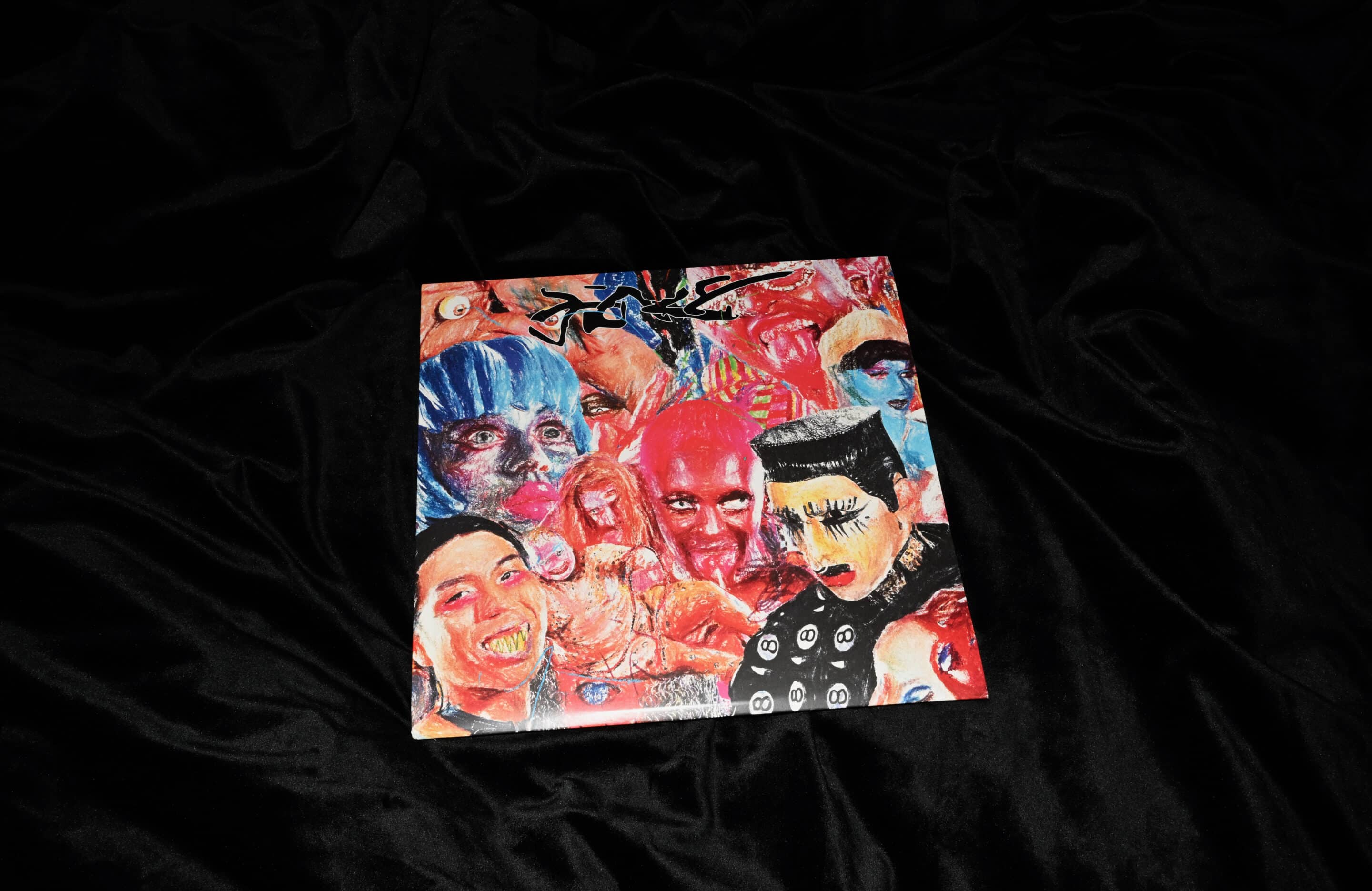
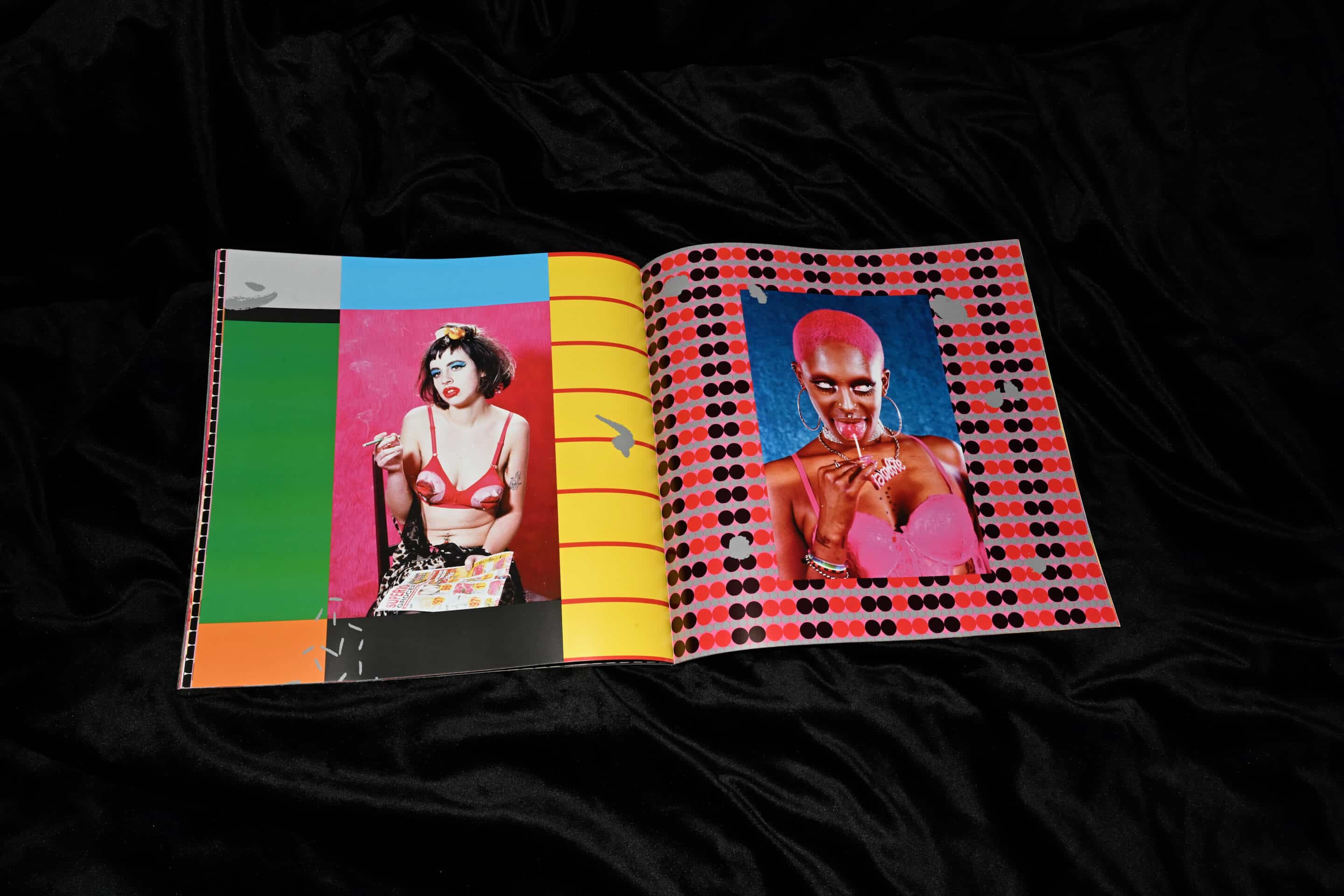
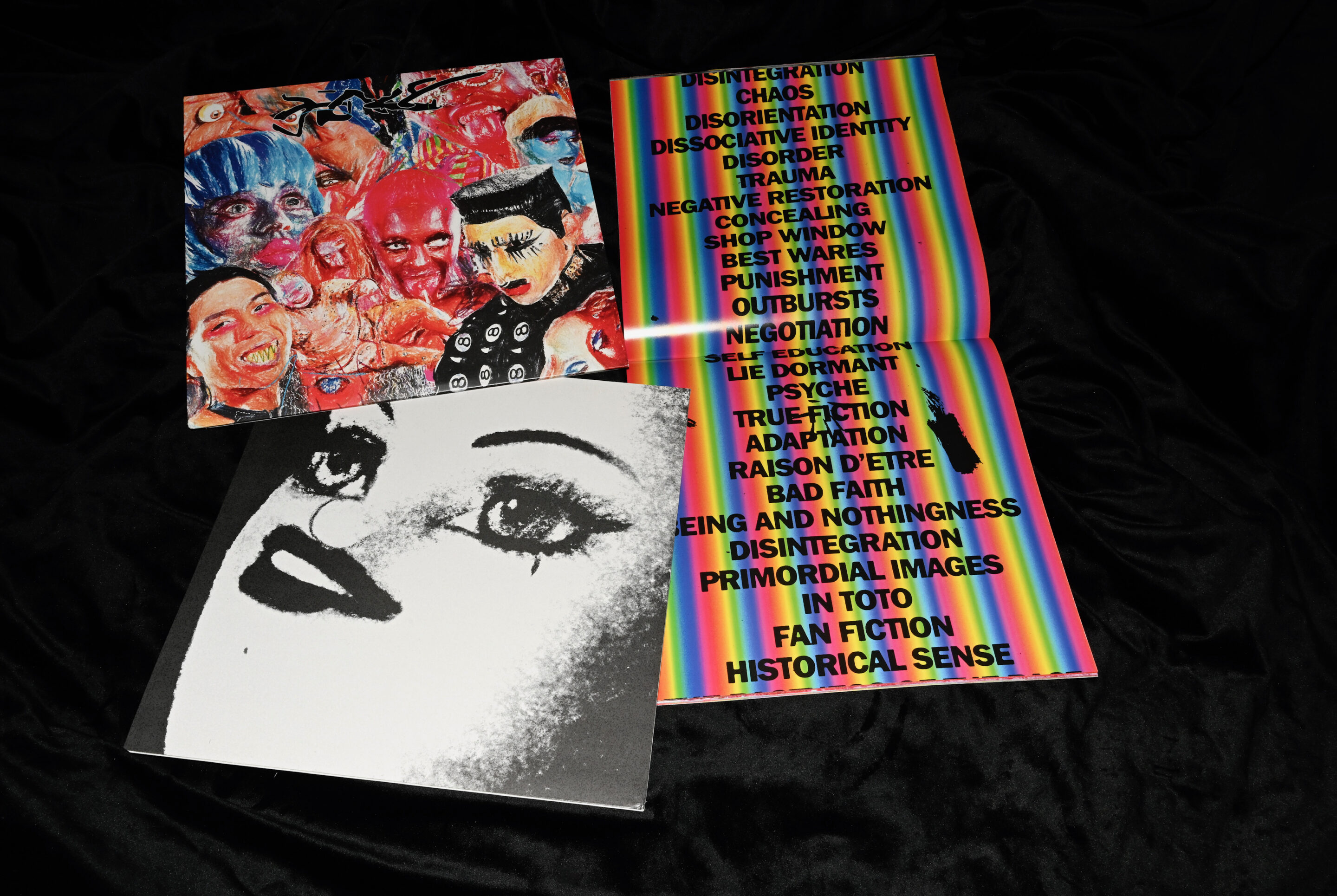
Published and edited by Cristiano Grim
Photos by Parker Day
Design by Bráulio Amado
Me and Marco go way back. He worked with Slow Motion Records, a label in Italy I’ve worked with for years, run by my dear friends Fabrizio Mammarella, Franz Scala, and Federico Scala. Such a gem on the Adriatic coast of Italy. Now their vibe is everywhere,from Berghain to underground venues across Mexico, China, Korea, Japan, and beyond.
Spaventi is the man behind almost all their masters. If you’re a DJ and a record collector, you know what it means to work with someone like Spaventi, your track is on “cocaine” when you play it, either on a massive sound system or your own phone. Marco is such a unique character. Looks like an accountant, but he’s a hippie and a man full of life energy, a gourmand, besides being a great musician, too. If you want to press a record, you need a mastering engineer to convert your track into frequencies the factory can cut onto vinyl. You can master online for $1, or you can hire a real engineer. The industry is infected with plenty of that!
Here’s the thing: if you’re an outsider, if you like fresh flowers on your table every day, if you drink champagne, if you like premium drugs, vintage cars, rare books, if you still masturbate to magazines, love public phones and seedy hotel rooms, then you work with Spaventi.
Fontegrafica is pretty much the same. Corrado is a third-generation printer. He’ll give you 20 paper options where a normal shop gives you two. These people don’t care about the budget, they want to transcend with you in a world that is accessible only if you love unconditionally, unconsciously and irrationally your daily work. We are here to overcome ourselves! That’s the rarest and finest quality in the publishing scene.

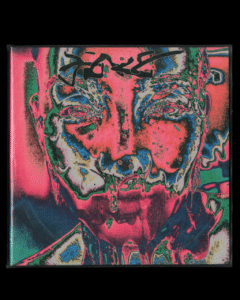
Example of transfiguration from raw photography to graphic design disruption – Original Photo by Cristiano Grim, FAKE1 design by Jonathan Castro
For example, I remember working with Bordello A Parigi when I started FAKE1. At that time, they were my distributor/manufacturer so they overlooked the whole production. They said I was crazy for wanting to print an offset zine. The owner specifically said, “Why would you spend all that money when you can print this on the cheapest paper and nobody will notice the difference?” That’s how much distributors care about artists.
The tragedy is not (only) being cheap but reducing a publication, an artwork, to a mathematical formula:
You’re selling something, so the cheaper you make it, the better the profit. Blah blah blah. I’d rather bankrupt myself for my work. I put everything I own into my publications. If I don’t sell, I don’t care, because what matters is the publication itself, that moment, that process, that time, that life energy where I overcome myself and my limits.
That’s the only thing that counts. That’s why I exist. It’s priceless!
As DJ REAL, you’ve been active in international radio scenes from Paris to Los Angeles. How does your DJ work influence your editorial vision for FAKE?
I read photos, I look at songs, I listen to poems. DJ REAL is a sort of second, like that Frankenheimer film.
I’m a record collector, and I can say that saved my life. Sharing my records with others is my way of searching for the miracle. There’s also a sadistic mind-control charm in DJing. One of my favorite DJs ever, Andrew Weatherall (RIP), once said that DJing is “quite vampyric.” It’s so true. I’m the mermaid in your Odyssey. I can DJ at your wedding or in a sweaty darkroom, you’ll come to me at some point, in trance, confessing your sins, and I’ll drink your blood.
In a time when much of media is digital, why commit to tangible formats like vinyl and offset printed zines? What do these physical forms offer that digital cannot?
They offer:
The opportunity to subvert
The illusion of owning your time
The sensuality of touching
The luxury of smelling your work
The pleasure of gambling
The beauty of limits
The blessing of losing
Digital can’t give you that.
FAKE feels both deeply personal and globally curated. How do you balance your singular artistic vision with the voices of the artists you publish?
FAKE is an unbalanced project. It’s pure, and for that reason, it leaks energy from every pore. I have faith in young artists and I respect old glories, even though sometimes both piss me off.
Recently, a young artist, very talented, never released anything before, just starting, asked me for a licensing agreement: LOL! A licensing agreement for one music track, featured on a 300 copy limited edition vinyl (no digital release) that cost me twice the retail price. How reclusive is a life padded by walls made of dollars and constant attention rewards: Like, like, like — $$$!!! Youngsters are born poisoned sometimes. You don’t see an underground release as an opportunity to express yourself in a different format, to connect with others, to subvert.
No. You want to be rich and famous by all means, because that’s what you hear, what you see, what you dream every day in your algorithm. That’s the narrative (again!!) you’ve assimilated. That’s your language, and so, your curse.
As I wrote in the opening of my upcoming poetry collection book: FAME IS IRREVERSIBLE.
With old glories, it’s different. They’re fundamentally afraid to die, artistically and physically. That fear feels imminent, and you have to deal with it. It can be dreadful and draining, but it can also unlock the best moments.
What’s next for FAKE? Are there any new directions, collaborations, or disruptions we should expect in upcoming releases?
Right now I’m touring across the U.S., launching FAKE4 – MASK VS PERSONA, featuring the work of photographer Parker Day and designer Bráulio Amado, with music by Machino, Daniel David Rose, Nick Hadad, Foie Gras, and Valley Latini.
My first poetry collection is coming out in December on FAKE: Poems by me, illustrations by Martin Groch, foreword by Richard Cabut. I’m performing my poems on dusty stages around the world. I’m currently in rehearsal for a future Off Broadway show with my dear friend, Alessandro Adriani of Mannequin Records, at Kule in Berlin and Lito Studio in Milan (a few panic attacks happened in the audience so I guess my poetry is working!). I recently performed solo, hosted by my friends Samantha and Johnny of Uncensored New York at Ki Smith Gallery and Pianos, and even more recently with rad drummer Greg Fox at IRL Gallery, my fave gallery in the world, run by my family, Chris and Alice. Me and Greg clicked so quickly! Ancient souls! We are planning to release a spoken word album and do a series of performances around the world .
In 2026, I’m publishing Tea Hacic-Vlahovic’s first poetry collection. We’re working on it together, and I’m shooting the cover myself. Tea is the smartest writer, her prose is a rose bloom dipped in a Suicidal Tendencies song blasted in a church. She is punk and she knows! I can’t wait for this book to come out!
FAKE5 is also in the works: photography and music by one of my dearest friends and favorite artists, Jane Pain—a New York legend. Jane, you are the essence of destruction. You inspire me constantly. I’m honored to work with you.

